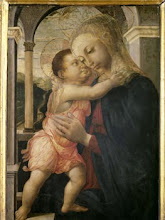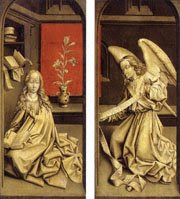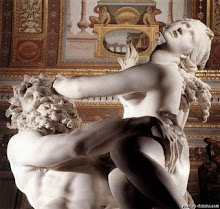





VERKOLJE, Johannes
(b. 1650, Amsterdam, d. 1693, Delft)
Biography
Dutch painter, member of a family of painters. He was the son of a locksmith, specialized in genre scenes set in richly furnished interiors, although he also painted mythological scenes and portraits. His two sons, Nicolaas Verkolje and Johannes Verkolje II (d 1760) were also painters and his followers.
According to Houbraken, he spent six months as the pupil of Jan Andrea Lievens (1644-80), where he completed unfinished mythological and genre pictures by Gerrit Pietersz. van Zijl (1619-65). Verkolje married Judith Voorheul in Delft in 1672 and in the following year joined the city's Guild of St Luke, serving as its dean between 1678 and 1688.
Verkolje's genre scenes, for example the Musical Company (1673; Amsterdam, Rijksmuseum), The Messenger (1674; The Hague, Mauritshuis) and the Elegant Couple (c. 1674; private collection), were influenced by Gabriel Metsu, Gerard Terborch and Caspar Netscher. Verkolje's portraits commanded high prices and were greatly valued for their outstanding finish, a style more polished than that of his predecessors. His work as a mezzotint engraver was equally appreciated and sought after. On the basis of a few mezzotints made between 1680 and 1684 after the work of English artists, it is generally supposed that Verkolje lived in London at that time, although this is unproven.
As a draughtsman, he made precise, small cabinet pieces usually employing pen and ink with brown wash or watercolour heightened with white chalk. Houbraken mentioned Albertus van der Burgh (b 1672), Joan van der Spriet (fl c. 1700) and Willem Verschuuring (1657-1715), among others, as Verkolje's pupils.
VERKOLJE, Johannes
(b. 1650, Amsterdam, d. 1693, Delft)
Biography
Dutch painter, member of a family of painters. He was the son of a locksmith, specialized in genre scenes set in richly furnished interiors, although he also painted mythological scenes and portraits. His two sons, Nicolaas Verkolje and Johannes Verkolje II (d 1760) were also painters and his followers.
According to Houbraken, he spent six months as the pupil of Jan Andrea Lievens (1644-80), where he completed unfinished mythological and genre pictures by Gerrit Pietersz. van Zijl (1619-65). Verkolje married Judith Voorheul in Delft in 1672 and in the following year joined the city's Guild of St Luke, serving as its dean between 1678 and 1688.
Verkolje's genre scenes, for example the Musical Company (1673; Amsterdam, Rijksmuseum), The Messenger (1674; The Hague, Mauritshuis) and the Elegant Couple (c. 1674; private collection), were influenced by Gabriel Metsu, Gerard Terborch and Caspar Netscher. Verkolje's portraits commanded high prices and were greatly valued for their outstanding finish, a style more polished than that of his predecessors. His work as a mezzotint engraver was equally appreciated and sought after. On the basis of a few mezzotints made between 1680 and 1684 after the work of English artists, it is generally supposed that Verkolje lived in London at that time, although this is unproven.
As a draughtsman, he made precise, small cabinet pieces usually employing pen and ink with brown wash or watercolour heightened with white chalk. Houbraken mentioned Albertus van der Burgh (b 1672), Joan van der Spriet (fl c. 1700) and Willem Verschuuring (1657-1715), among others, as Verkolje's pupils.




























.jpg)


.jpg)











